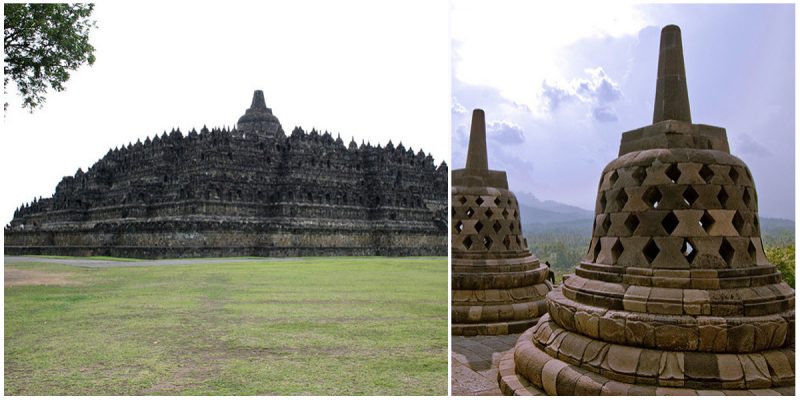The Borobudur Temple is a Mahayana Buddhist temple in Magelang, Central Java, Indonesia. It was built in three tiers: a pyramidal base with five concentric square terraces, the trunk of a cone with three circular platforms and, a monumental stupa.
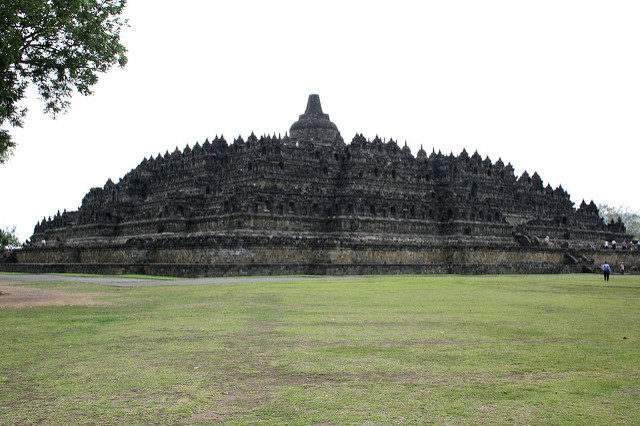
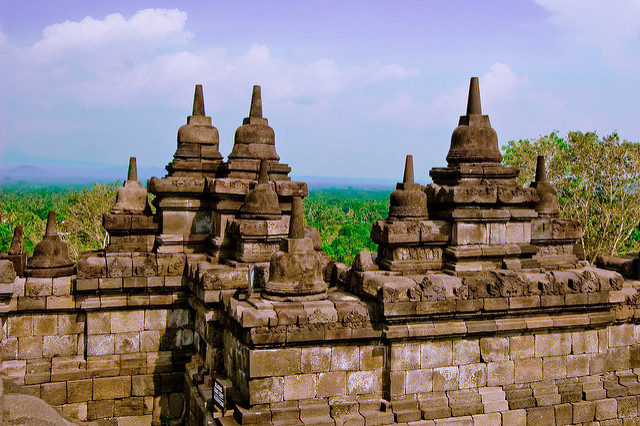
The age of the temple is uncertain, but the date of construction is thought to have been between the end of the seventh and beginning of the eighth century A. D., during the Sailendra dynasty.
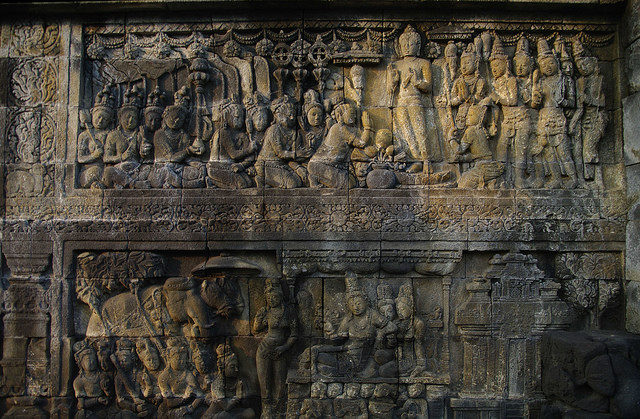
The temple was designed in Javanese Buddhist architecture, which blends the Indonesian indigenous cult of ancestor worship and the Buddhist concept of attaining Nirvana. Built as a single large stupa, when viewed from above the temple takes the form of a giant tantric Buddhist mandala, simultaneously representing the Buddhist cosmology and the nature of mind.
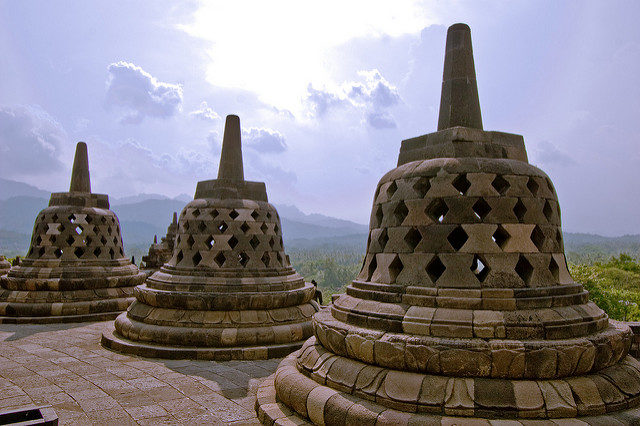
The central dome is surrounded by 72 Buddha statues, each seated inside a perforated stupa. The lowest level has 160 reliefs depicting cause and effect. On the middle level are various stories of the Buddha’s life from the Jataka Tales. At the highest level is a balcony, square in shape with round walls. The whole structure is in the form of a lotus, the sacred flower of Buddha.
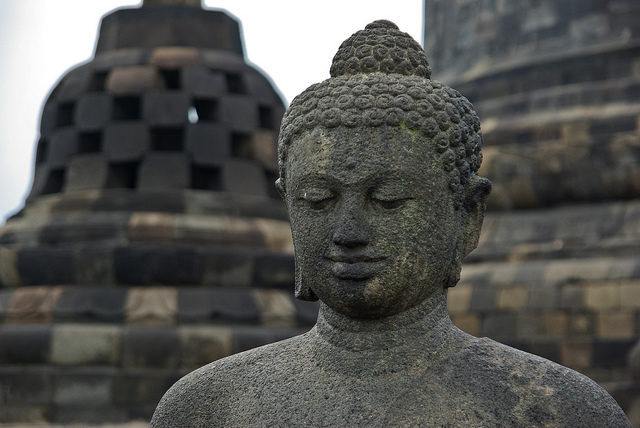
The temple complex laid hidden for centuries under layers of volcanic ash and jungle growth. The facts behind its abandonment remained a mystery.
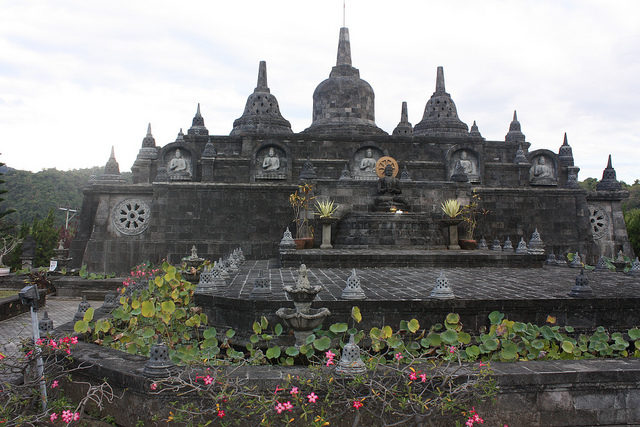
Worldwide knowledge of the temple’s existence was sparked in 1814 by Sir Thomas Stamford Raffles, the then British ruler of Java, who was advised of its location by native Indonesians. Borobudur has since been preserved through several restorations. The largest restoration project was undertaken between 1975 and 1982 by the Indonesian government and UNESCO.
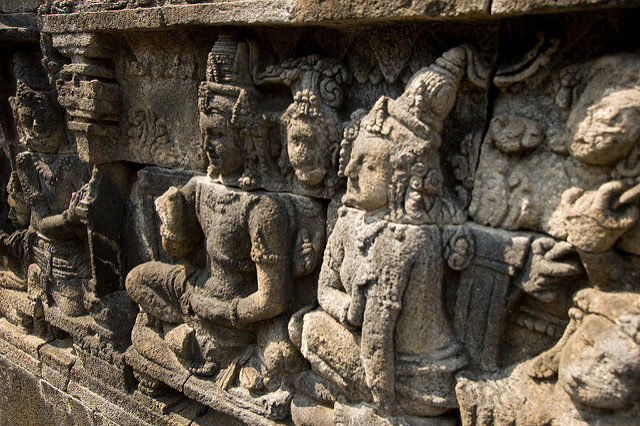
After the major renovation funded by UNESCO, Borobudur is once again used as a place of worship and pilgrimage.
The monument is the single most visited tourist attraction in Indonesia.
